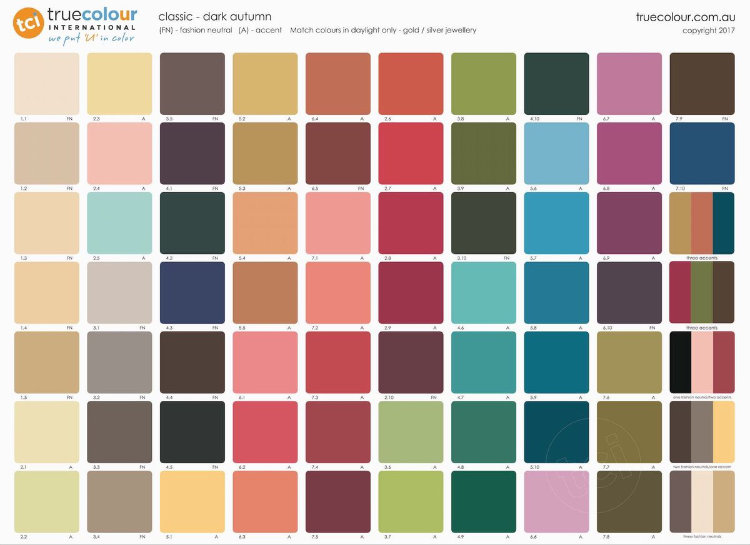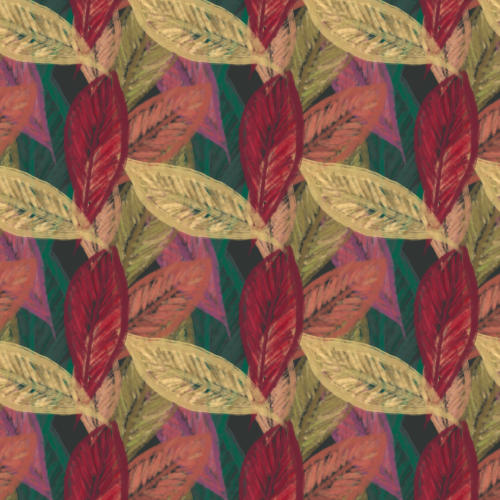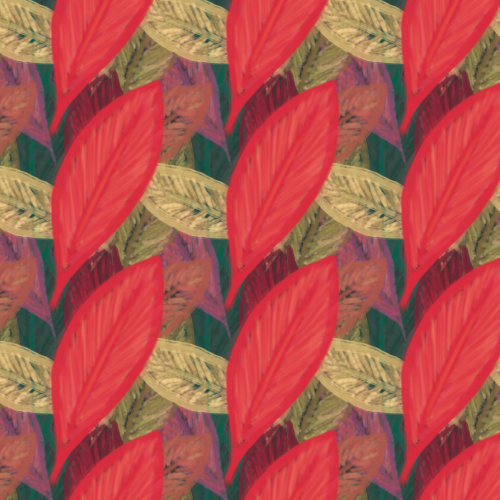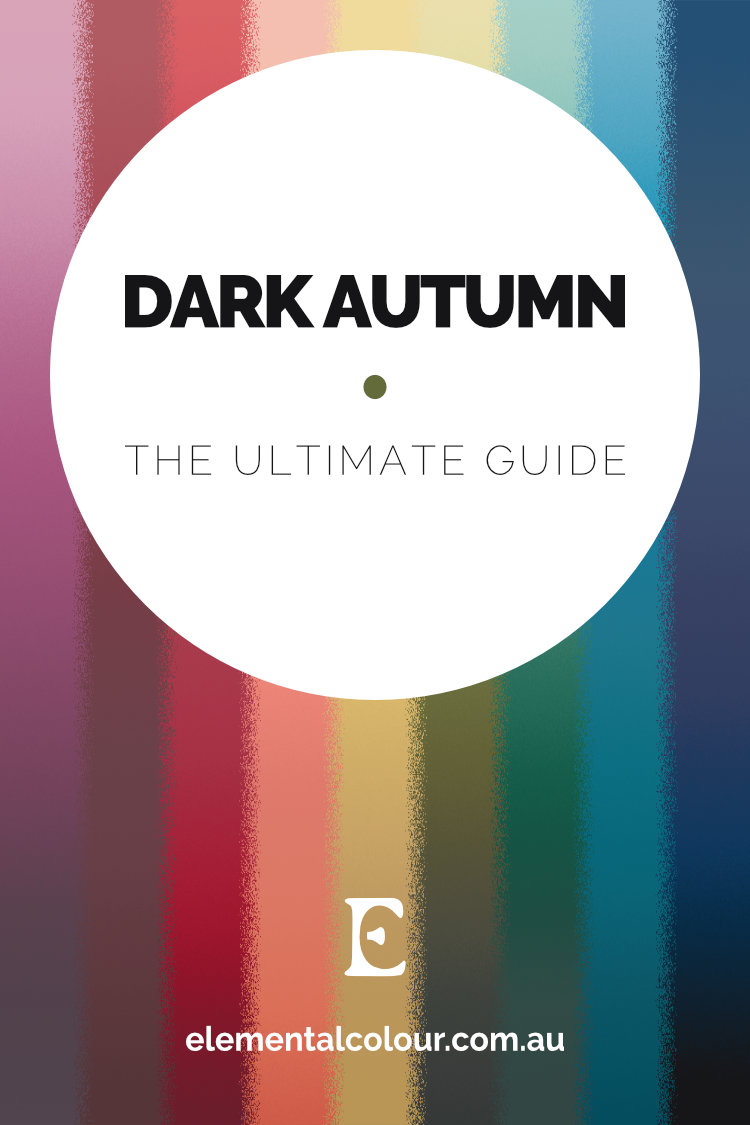Dark Autumn: The Ultimate Guide
Dark Autumn colours are evocative.
These are colours of the wild natural world, of deep forests and jungles (and leopards and tigers), of the desert at night, of the very last moments of sunset, when the earth is darkening, but some warmth still remains. The shadows are dark, so they evoke the hidden, the mysterious.
They also evoke the lush and intense, in passionfruit, figs and plums, fresh and dried. In coffee and cocoa, and all kinds of spices, especially roasted. In orchids and passion flowers, and many kinds of dried flowers.
Related: Images in 12 Tones
The palette
Dark Autumn colours are rich, deep, earthy, mysterious and enchanting.
In our 12 tone chart, Dark Autumn falls on the path from True Autumn to True Winter. It combines True Autumn’s rich, earthy palette with Winter’s drama and intensity.
So where do Dark Autumn colours sit on the 3 dimensions of colour?
Overall the palette is dark. There are of course light colours, the beiges and light greys, but they are the darkest lights of any of the 12 tones.
The colours are medium in chroma (saturation).
The colours are neutral-warm, so they contain both yellow and blue undertones, but more yellow than blue.
Compared to Dark Winter these colours are softer and warmer. Overall they're similarly dark, but Dark Winter has much lighter lights.
Compared to True Autumn these colours are more saturated, cooler and darker overall.
Compared to Soft Autumn these colours are the same temperature — neutral-warm— but are darker and more saturated.
Dark Autumn colour dimensions
For more about Dark Autumn colours, see The Value of Colour by Amelia Butler from True Colour International.
Clothing
If you’ve just discovered that you are a Dark Autumn, and you’re learning how to create a Dark Autumn wardrobe, congratulations! These are extraordinary colours.
Once you have your colours, creating outfits becomes easy, because every colour in the palette goes with every other colour. You don’t need to worry about it at all.
One of the first questions clients will ask me is: “Can I wear black?”
You have a black that is in your palette, that you’ll see on the cover of your TCI Dark Autumn fan. It has a subtle greenish undertone when compared to True Winter black. If you find it, buy it!
Realistically though, you’re likely to have blacks in your wardrobe that aren’t perfect. By themselves these will generally be too cool for you, and have the effects on you that you saw in cool colours at your draping — drained complexion, gaunt face, serious expression, etc.
You don’t necessarily need to throw them out, though. If you mix them with your own colours, you can create an overall Dark Autumn look, like so:
Try and keep your more perfect colours near your face; if you wear a black top, add a necklace or scarf in your colour.
As you accumulate your new wardrobe, keep your eye out for more non-black options, like black-brown, deepest olive and warmed navy. There are some fascinating and unexpected colours in your palette, that make for really striking outfits.
Here are some fun combinations that don’t use black:
Ok, so let’s see how Dark Autumn colours can look in outfits for women and men.
Related: Women’s Fashion in 12 Tones
Related: Men’s Fashion in 12 Tones
For more inspiration, True Colour has a 12 Tone Dark Autumn Pinterest Board showing wardrobe ideas for men and women, as well as a blog post of palette-matched Cashmere Pashminas for Autumns.
Corporate Clothing
When I’m discussing corporate clothing here, I’m talking about more conservative workplaces — if yours is more casual, this may not be relevant for you.
That said, corporate clothing, in terms of colours, usually consists of some or all of these:
Neutral colours
Dark colours
High value contrast (light/dark)
The classic example is a grey or black suit with a white or light-coloured shirt or blouse, and possibly an accent colour in a tie or jewellery.
As we saw above, black is workable for you, but true white definitely isn’t. You have beiges you can use to create fairly high contrast outfits, as in the black, red and beige combination shown below.
Neutrals and dark colours are plentiful in Dark Autumn, so those versions of corporate combinations are easy.
All of the combinations with black shown above would work, apart from the peach and turquoise one. There are suggestions on the last arm of the TCI Dark Autumn corporate fan, and here are some more:
For more on corporate clothing, see Dark Autumn Corporate Women from True Colour.
Patterns
Matching solid colours to your fan is one thing; matching patterns can be a trickier task.
If harmonising with the fan is too hard, try checking it against your face. If the colours are right, you’ll see the same effects you saw during your draping, like vitality, happiness, 3-dimensionality and authenticity.
What if most of the colours in a pattern are Dark Autumn, but there’s one that clearly isn’t? Does it matter?
There’s no absolute rule here, unfortunately. It depends.
But you’re more likely to get away with it if the non-Dark Autumn colour is
closer to Dark Autumn, like True Autumn brick red as opposed to True Summer pink
more neutral — an incorrect grey will be less problematic than an incorrect blue
a small element in the print
As an example of the latter, the first pattern below contains just Dark Autumn colours. The second introduces small leaves in a Bright Spring orange; in the third those leaves are much bigger.
The first is will, obviously, look perfect on you. The second is less good, but the bright coral leaves are small enough that you could probably get away with it. Conversely, they are overwhelming in the last one, and will clash both with you and your other Dark Autumn clothes.
Metals, jewellery, watches and glasses
I think of bronze as the quintessential Dark Autumn metal, but you can wear a large range of metals, including brass, gold, copper, pewter and silver, and even the occasional rose gold (check carefully, they’re more often Light Spring).
Like all Autumns, metals are usually better with less shine and more depth, like antiqued, oxidised and hammered metals. Bling makes no sense next to Autumn colours.
Stones can include garnet, peridot, aventurine, heliodor, labradorite, moldavite, sphene and zoisite, as well as wooden or coloured beads. Highly faceted gemstones are more comfortable in the Winter tones, and would need a more earthy metal to work for Dark Autumn.
All the metals discussed above can work for glasses frames, as can any of the colours in the palette. Tortoiseshell is a particularly Autumnal frame — Dark Autumn’s version gets much closer to black in the dark areas than the other two Autumns.
Hair colour
Dark Autumns, as the name suggests, almost always have medium to dark brown hair. Blonde Dark Autumns exist, but they are very rare. They have a dark, warm version of blonde, like caramel or roasted cashews. Auburn is also possible.
Makeup
Complexion makeup (foundation, concealer, etc.) needs to be matched to your skin. If you have trouble finding or matching foundation, I have a blog post that might help.
The “colour makeup” comes from your Dark Autum palette.
Dark Autumn neutrals
For a neutral eye makeup, you can use eyeshadows in your beiges, greys, browns, and golds, with black if you want more drama.
Brown or black for brows, or even a khaki-grey if your brows are more ashy. I find the neutral Autumns often have a lot of green in their colouring, in their skin, eyes and hair, and the brows are no exception.
Dark brown eyeliner, and black-brown mascara. Most black mascaras are quite blue-black, too cool and harsh for you warmer skin and eyes.
Dark Autumn greens, blues and purples
If you like more colourful makeup, use any of the accent colours in your palette. Olive is beautiful, bringing out the green in the eyes, or plums and orchids to contrast.
Dark Autumn reds
Blush and lip colours come from the red, plum and peach area of your palette. All will work on you, but most women will find their perfect shade is somewhere within this range, so trial and error may be necessary here.
Dark Autumn colours allow for a very wide range of looks, as you can see below.
Related: Makeup Looks in 12 Tones
Smoky eyes and nude lips work on no-one better than a Dark Autumn. The eye is warmed, often bronzed, and be careful not to go too light on the lip. Choose a peachy-brown colour from the palette.
For maximum drama swap the nude lip for a deep, vampy one, like merlot or fig.
The pin-up look can also be done, with flicked liner, a beige eyeshadow instead of white, and a deeper, warm red lip.
Bronzer is a quintessentially Autumnal product, and so the bronze goddess look works here too. Make sure the bronzer is not too orange (better for True Autumn) or ashy (Soft Autumn).
For a simple, natural day look, wear a wash of beige or brown eyeshadow, black-brown mascara, a smoked-peach lip or a sheer berry one, and add a bit of the lip colour to the cheeks. It doesn’t take much when the colours are perfect.
I don’t recommend highlighter for Dark Autumn.
Autumns in their own colours have beautiful velvety skin, and melting, captivating eyes.
The highest shine and lightest colour on the face is in the eyes. That’s part of what gives them their sparkle, and compels our attention.
Creating higher shine or lighter lights somewhere else on the face will dull your eyes and make you look sweaty, not glowy.
This certainly doesn’t mean you have to avoid shimmer altogether. Metallic eyeshadows can be fabulous here, especially in the medium or deeper colours, like bronze or antique gold. But be careful with light shades, because many have a white reflect, which will just be unflattering on you as the True Winter white drape was.
This is also worth remembering if you whiten your teeth — if you make them whiter than the whites of your eyes, your eyes can dull by comparison, and it’s hard for other people to focus on anything but your teeth.
Weddings
If you’re getting married, congratulations!
Wearing your suit or dress and accessories (like a boutonnière or bouquet) in your colours will bring out your best on your wedding day.
A Dark Autumn suit could be in your warm black, merlot, deep forest green, or navy. In some of the images below a white shirt is shown, because they’re so ubiquitous as to be unavoidable. Choose your beige instead, or one of your deep colours for more drama.
For a classic wedding dress you can go with beige or antique ivory. In that case you can add depth in a sash on the dress, in your bouquet, jewellery and makeup. Or choose a coloured dress, like gold or merlot.
You can also use these colours in your cake, flowers, table settings and decorations to create a beautiful, romantic wedding.
Related: Wedding Inspiration in 12 Tones
Living spaces
Autumn colours are widely used in interior design, because the natural earthy colours create a homely atmosphere.
Dark Autumn adds some depth and drama, so are not quite as ubiquitous as the other two Autumns. But as you can see below, they create beautiful, enchanting living spaces.
Related: Living Spaces in 12 Tones
Pin this:























